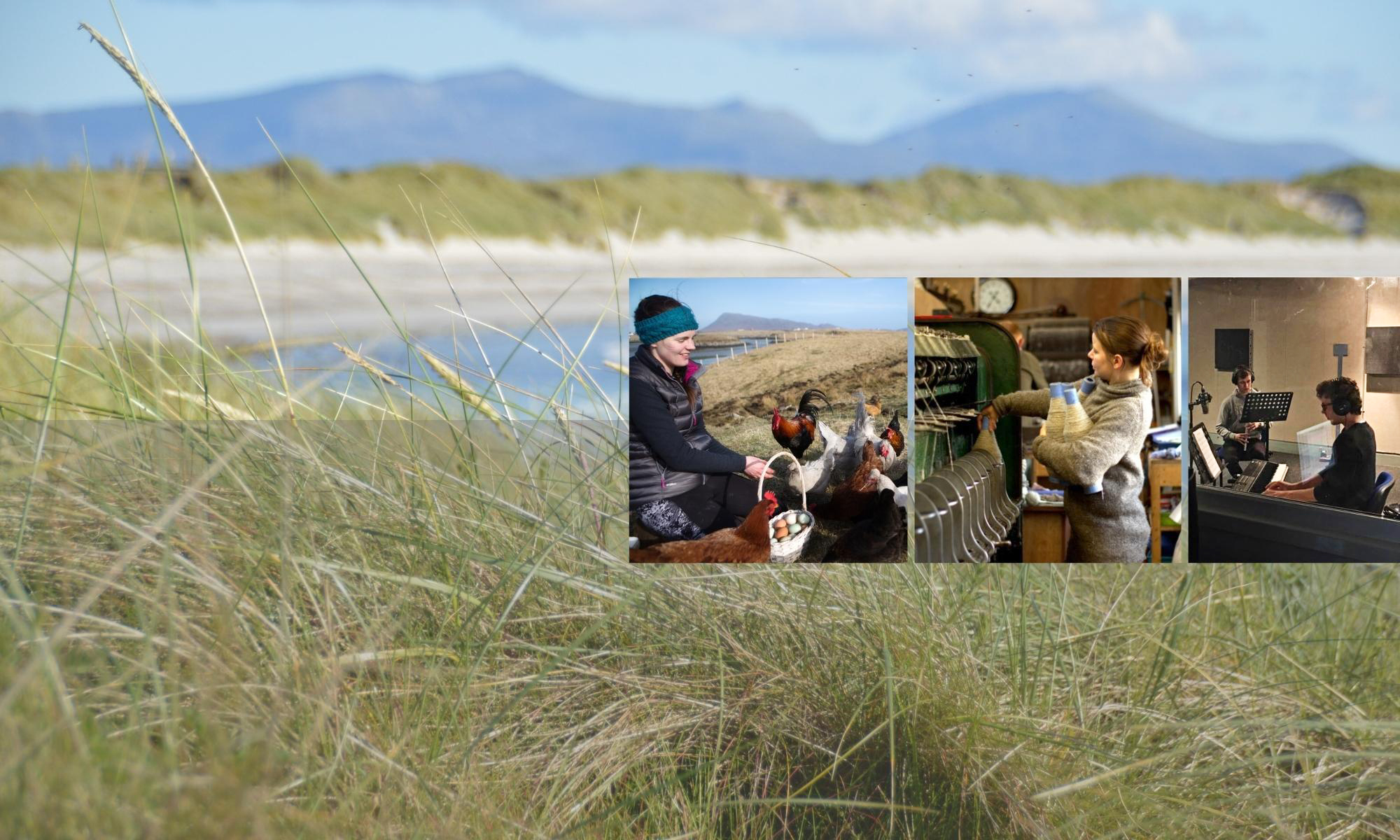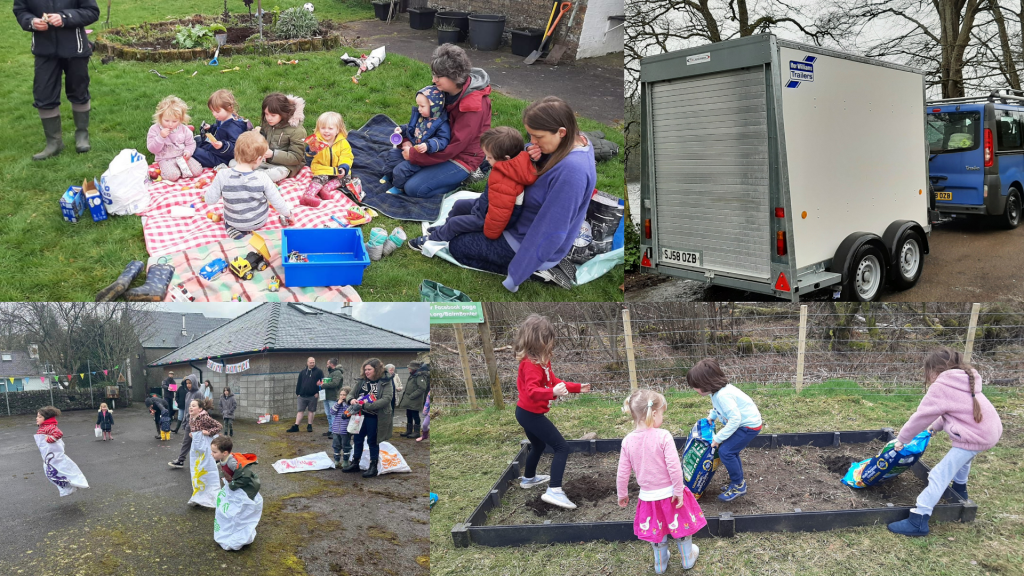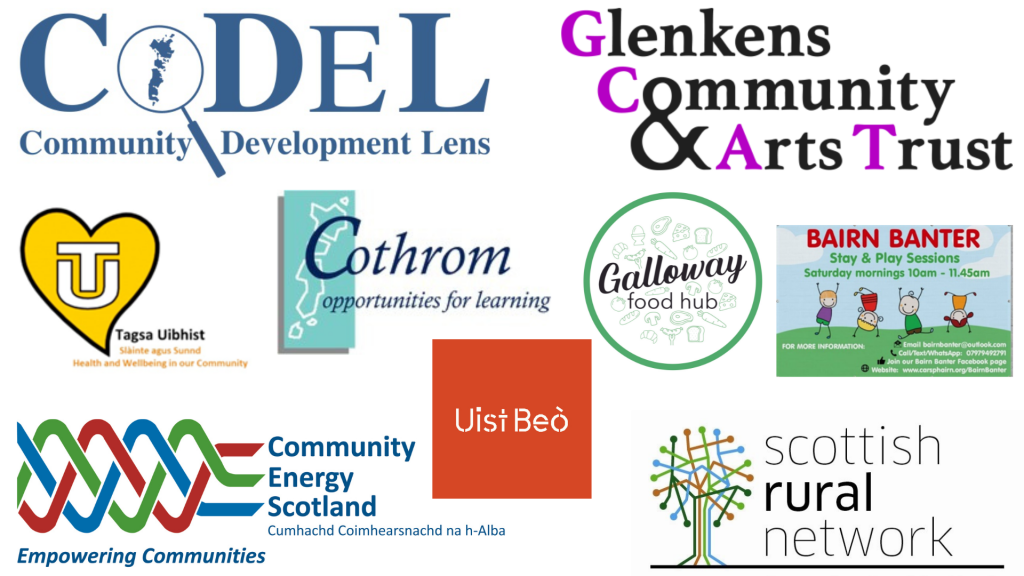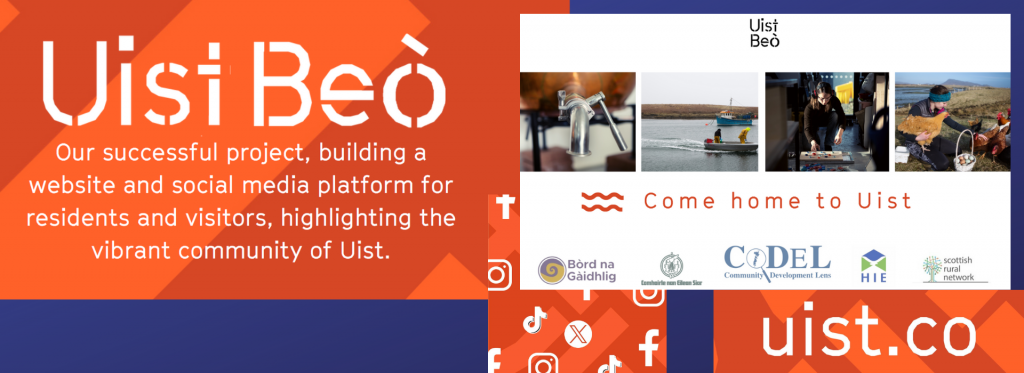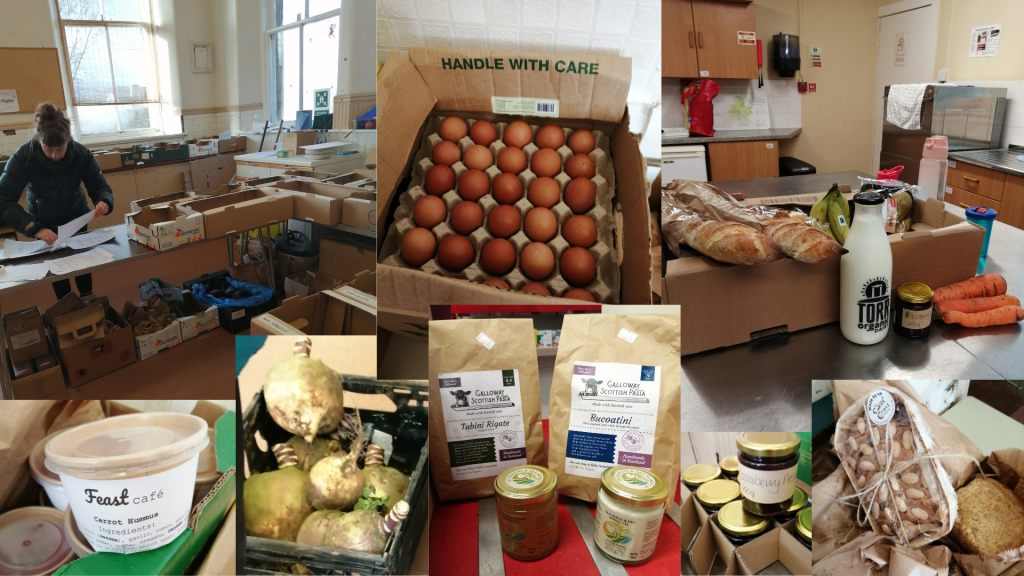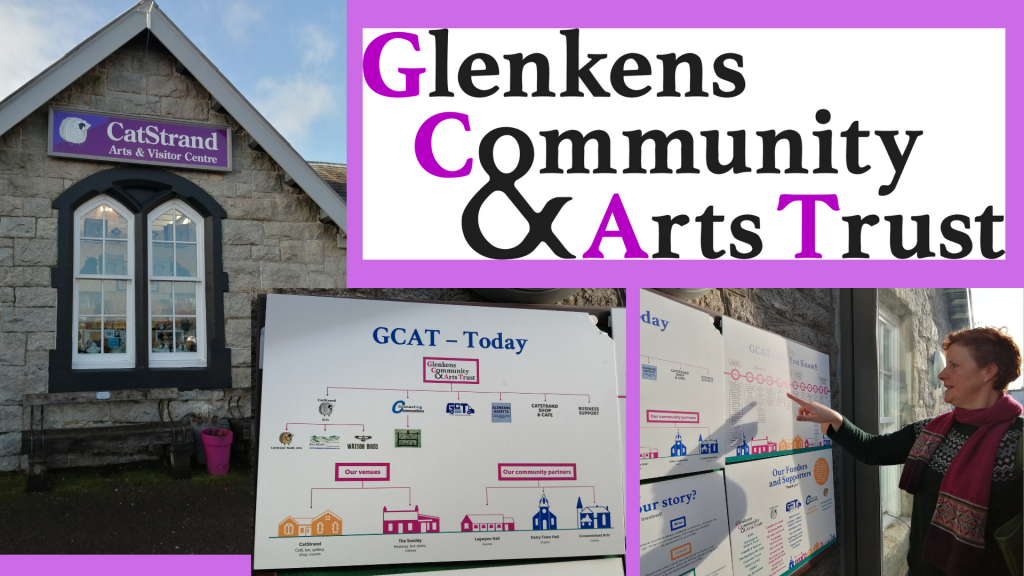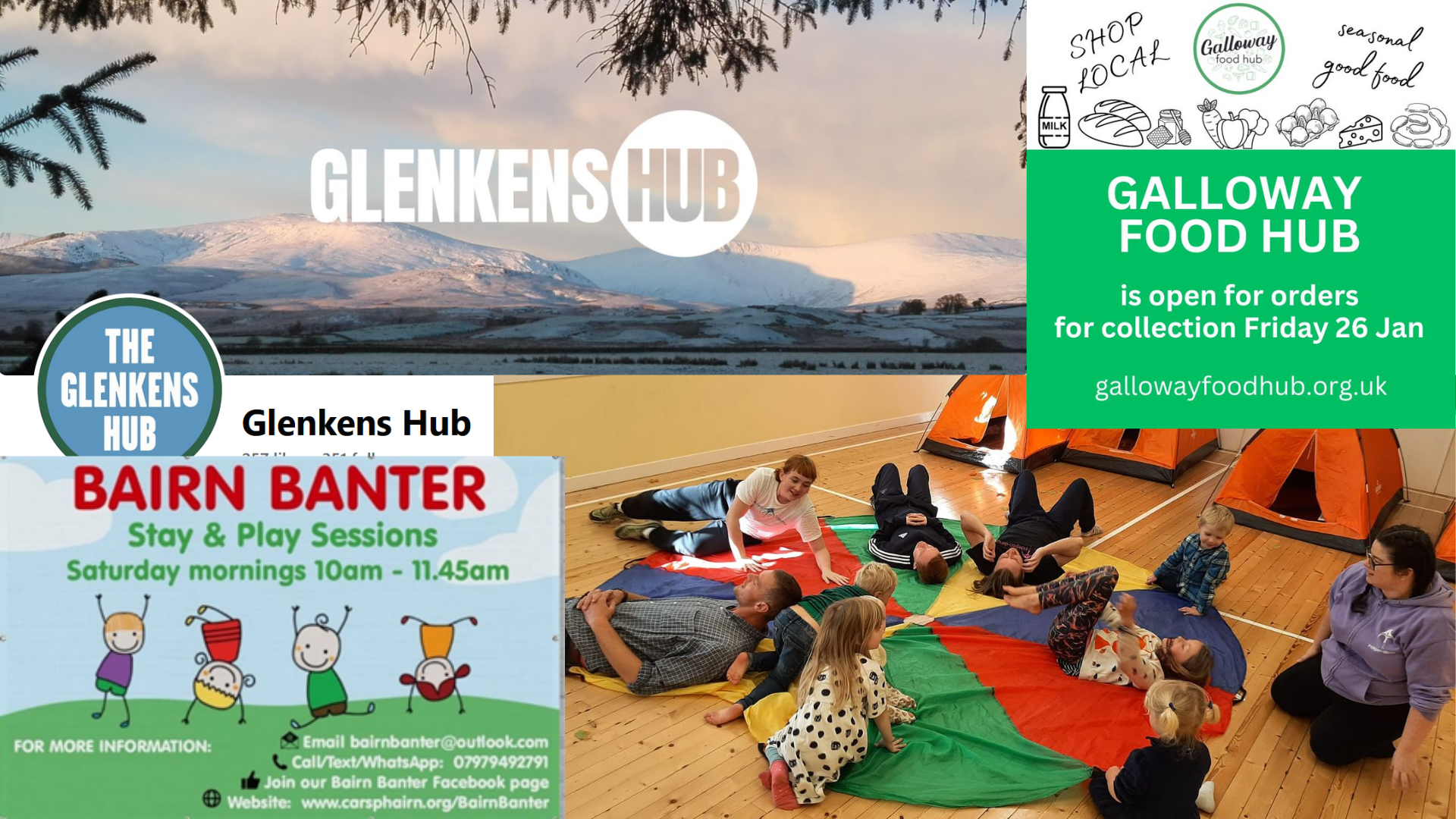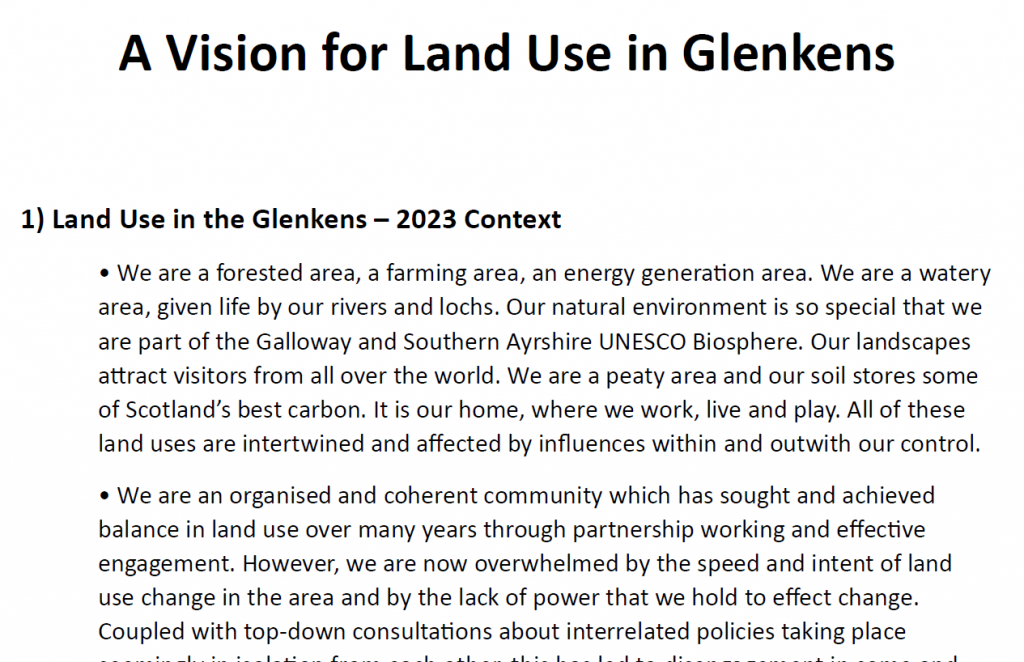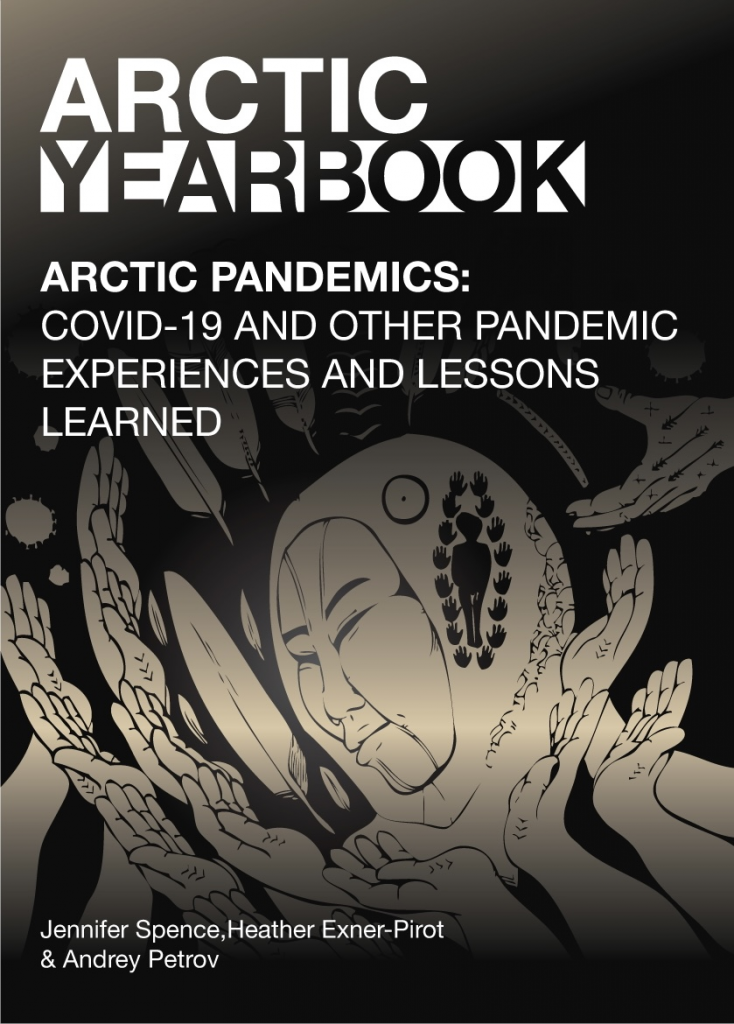“Engaging with ethnic minorities in a rural as compared to an urban context requires a very different approach, due to the significantly lower numbers of ethnic minority people. Additionally, as the numbers of ethnic minorities and people who come to the islands from outwith the UK are significantly proportionately lower than in urban areas, more effort in removing barriers, and a better and positive approach to inclusion needs to be created.”
One element of the Community Action in Uist and Glenkens project involved exploring Engaging minority voices in community strategies for a Just Transition in Uist¸ … how to shape an engagement process which is welcoming, open and safe for ethnic minority groups and those who have come to Uist from outwith the UK, whose voices are often not heard in the usual community engagement activities. This is not an easy or quick task, and this blog post shares some of the important reflections that have emerged from the process so far.
We explored race equality and other relevant issues at a public event, facilitated by CEMVO, bringing some 20 people from Uist together to learn, share and discuss and put forward ideas for diversity and inclusion in community engagement.

In the longer term we want to devise a guide of suitable approaches for engaging with ethnic minorities in island communities that can be used as good practice, including case studies and learning from this project.
Some challenges to standard approaches to engaging minority voices emerged. First was that of numbers, and how to ensure every participant has a sense of belonging, very critical to our island culture. The second was the historical legacy of the deep oppression of Gaelic culture within and beyond our island communities.
Uist, and the Scottish islands as a whole, has a very small proportion of people resident from ethnic minorities, about 1 per cent, compared to 4 per cent nationally in 2011. Countries of birth other than Scotland and England accounted for 5 per cent of the population on inhabited islands (8 per cent for Scotland as a whole). When engaging with the Uist community, an event which reaches 50 residents would be very successful. However, to reach a proportional number of ethnic minorities, one person from an ethnic minority would need to be present. Dealing with such low numbers makes it difficult to ensure success without directly targeting ethnic minorities and people who come to Uist from outwith the UK. It was felt such an approach is unfair to the people invited as they are being targeted because of their ethnicity, and not for what they would bring to the engagement.
“The rule of thumb to engage cross culturally in other locations seems to hinge upon improving access to target ethnic groups thereby opening the door to individuals within that group. This could be by building relationships with a group via religious venues like a mosque, or cultural centres or celebrations. This presents a unique challenge to Uist as Uist’s ethnic diversity is low compared to other islands and the mainland. For some ethnicities there are not enough people here for there to be a sense of a group who gather because of their ethnicity, and it’s potentially offensive to target an individual on the basis of a sole characteristic. The important thing is to understand the barriers to people attending, and then ensure the event is advertised in a way that everyone can understand what it is and why they should go. And the main thing is to ensure that everyone who attends feels that they are there because they are part of the community, not because of ethnicity or any demographic they may represent. There are plenty of groups that gather around activities rather than identities. Maintaining an understanding and relationship with these groups is still a way to increase access to members within those groups whereby there happens to be ethnic diversity demonstrated.”
Targeting individuals could not only be offensive, but could also be detrimental to their feeling of belonging in the community. There was a strong consensus that planning community engagement well so everyone living in Uist feels welcome by a positive feeling of belonging to our community, is what we want to achieve in our engagement. We may not be able to achieve significant numbers of engagement with ethnic minorities in Uist, or indeed any engagement at some events, however this cannot be seen as a failure. Success in engagement of ethnic minorities should therefore be measured by:
- the degree to which the engagement removes barriers to engagement for ethnic minorities, and those coming to Uist from outwith the UK;
- achieving welcoming engagement which promotes a sense of belonging to Uist for all.
“It is important to recognise that membership of an ethnic group is important, and valuing that difference is not a barrier to integration. Someone can fully embrace the indigenous cultures here but that should not be seen to erase who they, or their families were, prior to their story relocating here. Instead it should add to it. The essence of the days event was wanting to remove barriers to participation and it was underpinned by the belief that utilizing diversity allows both old and new perspectives to continue in sustainable ways.“
There was also consensus that, if off-island organisations are consulting the Uist community, that local community groups should be given the opportunity to conduct the sessions, in order to understand the local context and history, and to ensure a wide section of the community is reached. We are tired of externally managed consultations whose only source of information and insight comes from our own communities, but they are paid to get it from us. Any community engagement we deliver needs to be adequately resourced to ensure it reaches a diverse number of people in our community.
The second challenge emerged from the historical legacy of the oppression of Gaelic.
The participants learnt much about racism, and anti-racism, and how racism is embedded and constantly reinforced in our society, from unconscious micro-aggressions to institutional racism. We understood better how there are many dimensions of discrimination, e.g. under the Equalities Act, obviously including race, but also disability, gender, sexual orientation, age, religion and many other “protected characteristics”. We also got a sense of how discrimination can multiply, especially for those who have more than one protected characteristic. It was concerning to hear that the environmental sector is the second least diverse sector after farming: 4.8% are ethnic minority in the environmental sector compared to 12.6% across other professions. This is a challenge to everyone in the environmental movement.
The discussions at the event triggered individuals and groups. Many individuals expressed issues and in some cases hurt they had experienced themselves. The direct learning about racism needs to be there, as do all kinds of processes to challenge racism and institutional racism. Perhaps there could also be real space for processes to enable people to own their own hurt, and that of their ‘group’, and to recognise the hurt in others and other groups, and to jointly explore how to reach a point of compassionate action.
The headline for the Corrymeela Community in Northern Ireland, whose work emerged in response to the deep community conflicts, to the Troubles, in NI, says: “In our increasingly divided world, we support thousands of people from different backgrounds to live well together.” How can we live well together? How can we best build constructive solidarity across different groups and races?
These issues are of particular relevance to the Gaelic community. This is the slide that was shared by CEMVO to explain the roots of racism.

Participants recognised the similarities to their own historical reality, which saw similar colonial practices and perspectives imposed on the Gaelic world, whose peoples were also regarded as ‘inferior’, ‘dirty’, ‘uncivilised’, ‘illiterate’. Vast numbers were cleared off their land and homes, and Gaelic language and culture rigorously suppressed.
All this does not gainsay that many Scots, among them Gaels, also benefitted from the empire and themselves participated in many rascist views and practices. Nevertheless, while we are clearly in better times now, the legacy, the trauma, the pain, the grief live on, passed down the generations. And we face the very real and current threat in our own islands that unless we rigorously assert the value of our culture, and our rights to our culture, and unless we collectively use our language and culture in day-to-day life, it is likely to die. This can lead to uncomfortable dilemmas, for example how to respond to increasing numbers of outsiders buying up property here, and the impact that may have on the survival, or not, of Gaelic language and culture.
For some the session triggered this connection to Gaelic historical experience so strongly, including within a group many of whom were not Gaelic speakers. This was very helpful in understanding our own community better, and the deep importance for us all of the Gaelic language, culture and heritage. It may also, in a small way, open up space for contributing to the processing of the on-going legacy of the deep oppression of the Gaelic world.
Overall this points to the need to take a somewhat different approach to racism and anti-racism within the West Highlands and islands, that acknowledges the oppression Gaelic communities have suffered, without denying our own contributions to racism within our nation and the wider world. We could hope that the local history of oppression could open up opportunity for compassionate understanding of those who face so much discrimintation today based on their race and other characteristics.
As we stated earlier, we are now seeking opportunities to devise a guide of suitable approaches for engaging with ethnic minorities in island communities that draws on all the insight and learning that has already emerged.
We thank all our partners, including Community Energy Scotland and CEMVO, and the funder Scottish Rural Network, in the project on “Community Actions in Uist & Glenkens”. The views expressed in this blog post are our own.
